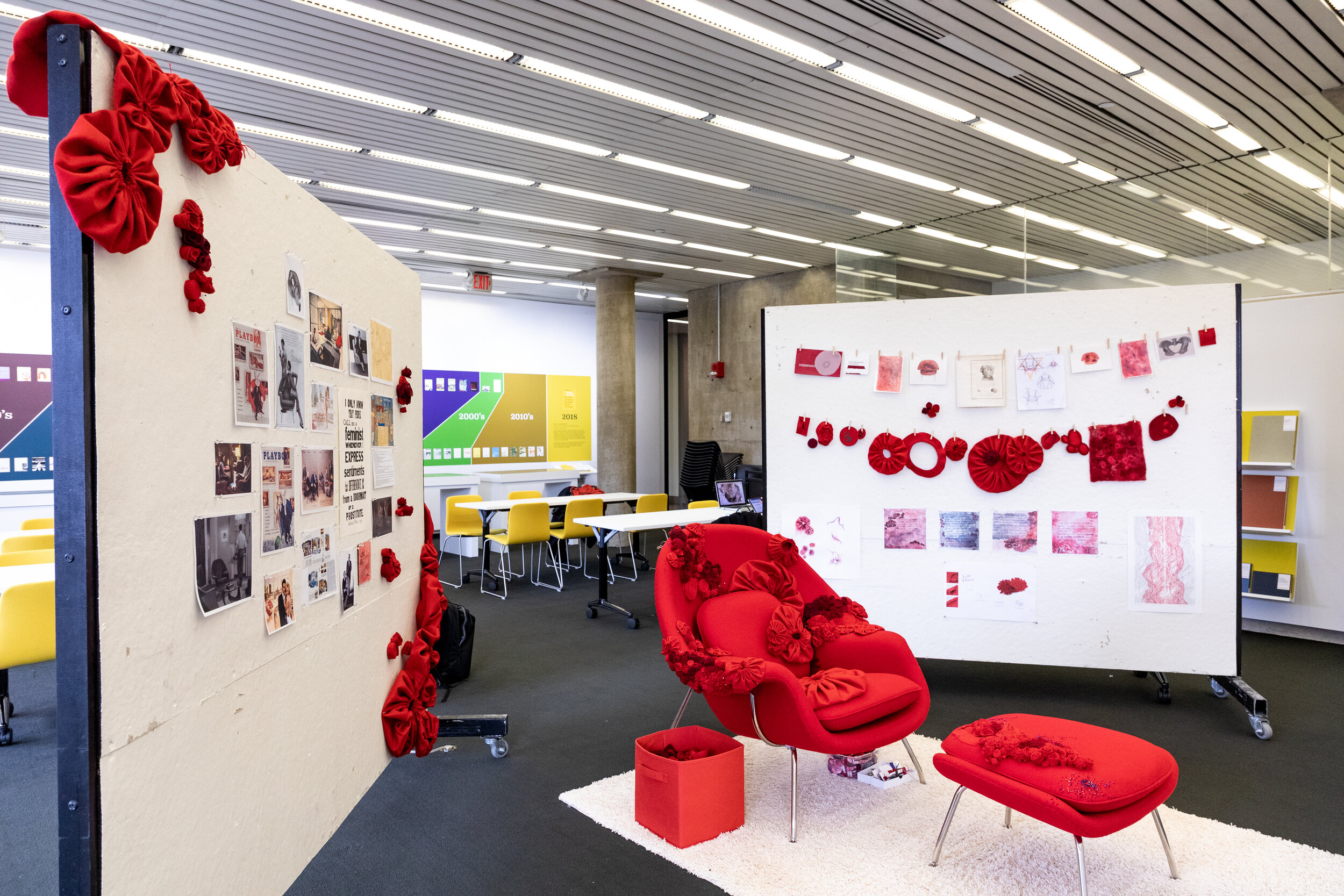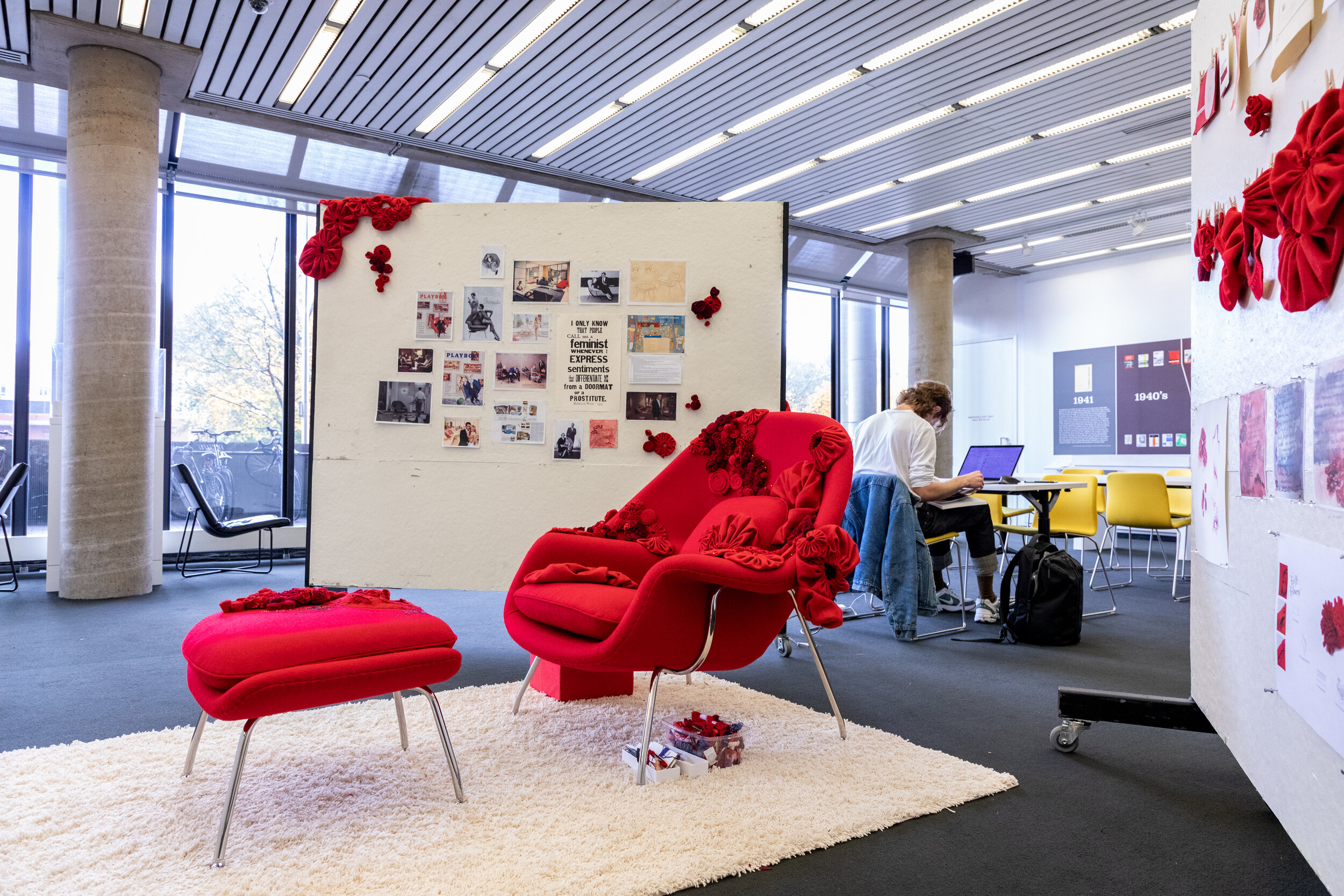
A Convergence at the Confluence of Power, Identity & Design Exhibition
November 2-3, 2018
Exhibition
A Convergence was the start to a wide-spread dialogue about the importance of identity-based discourse in the practice and pedagogy of design of the built environment.
This convergence marks the formation of a regional network of equity-focused design student groups. We have a chance to grow and merge the many individual conversations happening in our departments and in our schools. The SAM list did not tell us anything we did not already know; however, it did spark broad conversation where there had been uneasy silence. We must not return to that silence. We must engage in a collective restructuring of the design disciplines and actively question the nature of design work and how that work intersects with gender and other personal identities.
Team:
Exhibitions: Shira Grosman, Ciara Stein, Sydney Conaway, Alex DiStefano, Alysoun Wright, with Adelle York
Video Correspondence from Toni Griffin, Amale Andraos, Katie Swenson: Polly Sinclair with Cynthia Deng
Feminine Power and the Making of Modern Architectural History
Exhibition Team: Sharon (Zixuan) Deng (MArch 21), Connie Trinh (MLA I 20), Haoyu Zhao (MLA I 20), Ines Zalduendo (Loeb Library Special Collections Archivist and Reference Librarian)
Reproduced for Women in Design for Convergence
Organized by WiD, and drawing on a range of archival materials, “Feminine Power and the Making of Modern Architectural History” juxtaposes Jaqueline Tyrwhitt (1905–1983) and Alison Smithson (1928–1993), two women at the center of the transnational network of theoreticians and practitioners who shaped the post-war architecture and urbanism movement. Through writings, photographs, and drawings, this exhibition celebrates women’s under-recognized voices in the making of modern architectural history in order to cultivate new perspectives on gender and power within the Harvard GSD community and beyond.
Feminine Power was created by WiD as an exhibition for the Frances Loeb Library on view from Jan 29th - March 18th, 2018. More information about that exhibit can be found here.


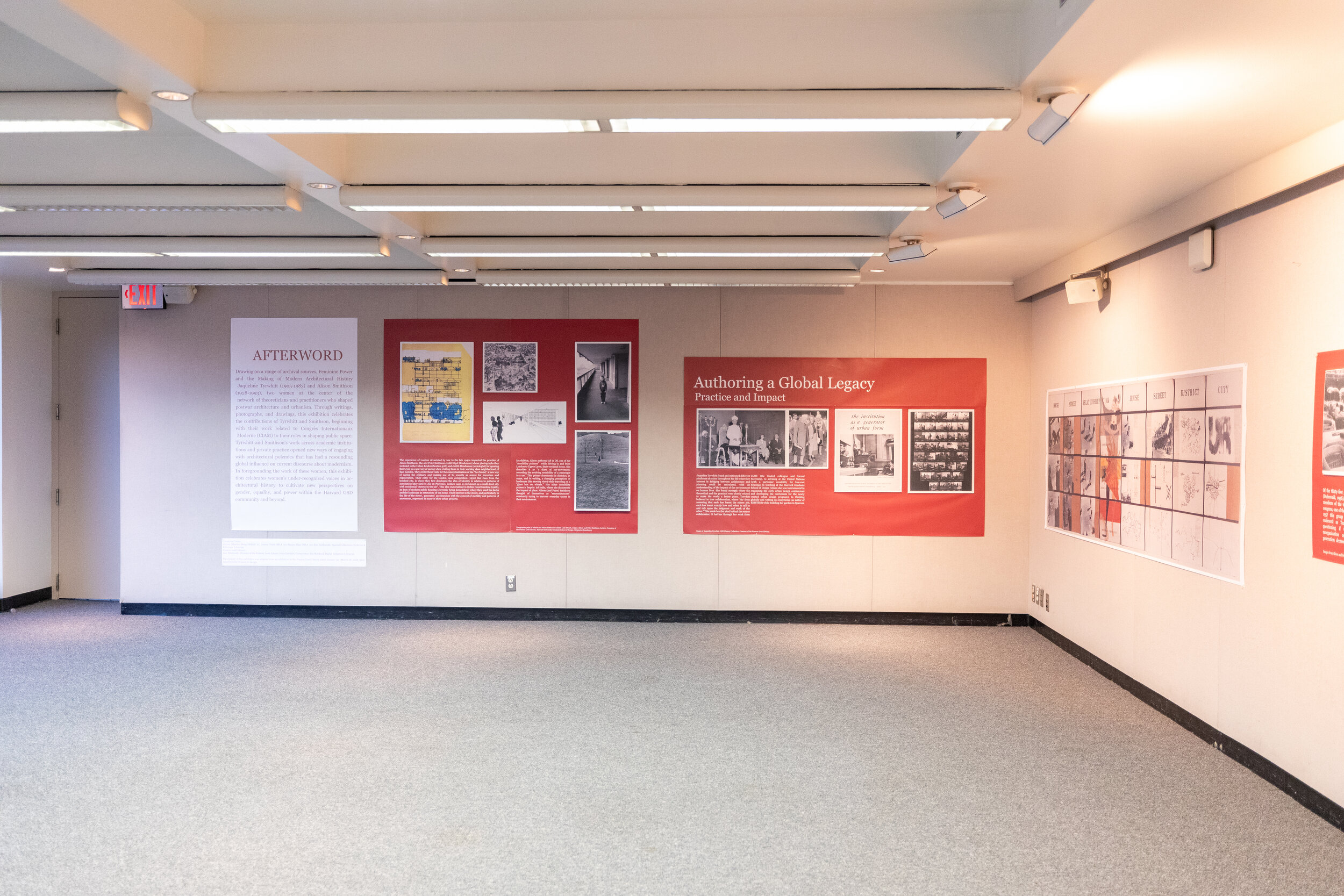
THE MISSING 400: On the Omission of Women from the Urban Environment
Narration: Hélène Cixous & Ghazal Jafari; Concept & Production: Pierre Bélanger, Hernán Bianchi-Benguria, Shira Grosman, Ghazal Jafari, Alexandra Mei; Research Assistance: Timothy Clark, Tiffany Dang
Reproduced for Women in Design for Convergence
A short videographic essay re-examining the institutional structures of sexism and historical roots of racism in architecture that have led to the systematic erasure of women from the design disciplines of the built environment. The multimedia project features a live diagram that maps out the names of over 800 women, whose lives—as designers, builders, writers, historians, photographers, philanthropists, and more—have shaped over 800 years of urban history. The narrative and protagonist for the essay is formed around a historical, critical revision of Architectural Review’s 2000 Article “Jencks’ Theory of Evolution: An Overview of Twentieth Century Architecture” by Charles Jencks.
Video. 2017, 8:26 minutes. Produced in Canada and the United States of America.

Pioneering Women of American Architecture
Mary McLeod and Victoria Rosner, Co-Editors and Cynthia Phifer Kracauer, Executive Director, Beverly Willis Architecture Foundation
Reproduce for Convergence with permission of the Beverly Willis Architecture Foundation
Pioneering Women of American Architecture is a collection of profiles of fifty women who have made important contributions to American architecture. All of these women were born before 1940, at a time when women struggled both to be allowed entry into the architectural profession and to be recognized for their work. They also broke many barriers, both sexual and racial, challenging the institutions of architecture itself as well as many of the social conventions and gender stereotypes of their time. Going forward, we hope this project can move architecture created by women to the center of architectural history and invite more young women to study and practice of architecture.


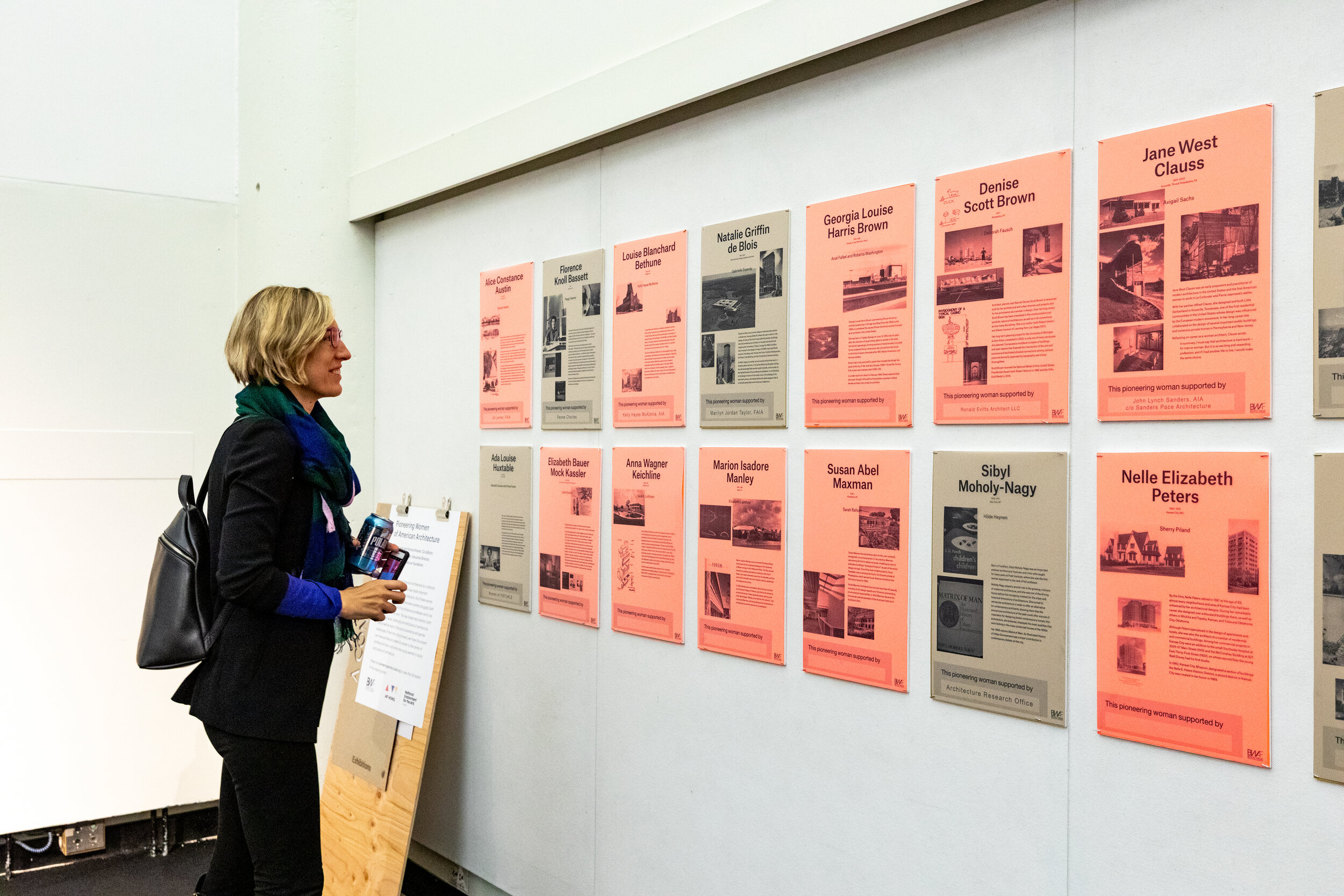
Contextualizing Women in Design 1860-2018
Collaborators: Shira Grosman and Alexandra Mei
Reproduced for Women in Design for Convergence
Beginning in 1860 with the foundation of the National Women Suffrage Association and in 1867 with the opening of the first university architecture department in the United States, this timeline documents the history of women in design. Contextualizing the history of women in the fields of architecture, landscape architecture, urban planning, and interior design, this living document connects the evolving presence of women in the design professions with the growing influence of women in politics, art and technology. This timeline thus demonstrates the impact of social and political forces on these design professions, and in so doing, places women at the forefront of the future evolution of design. While this timeline is printed here, it is a living document. Attendees were invited to add more events to the timeline using note cards provided.

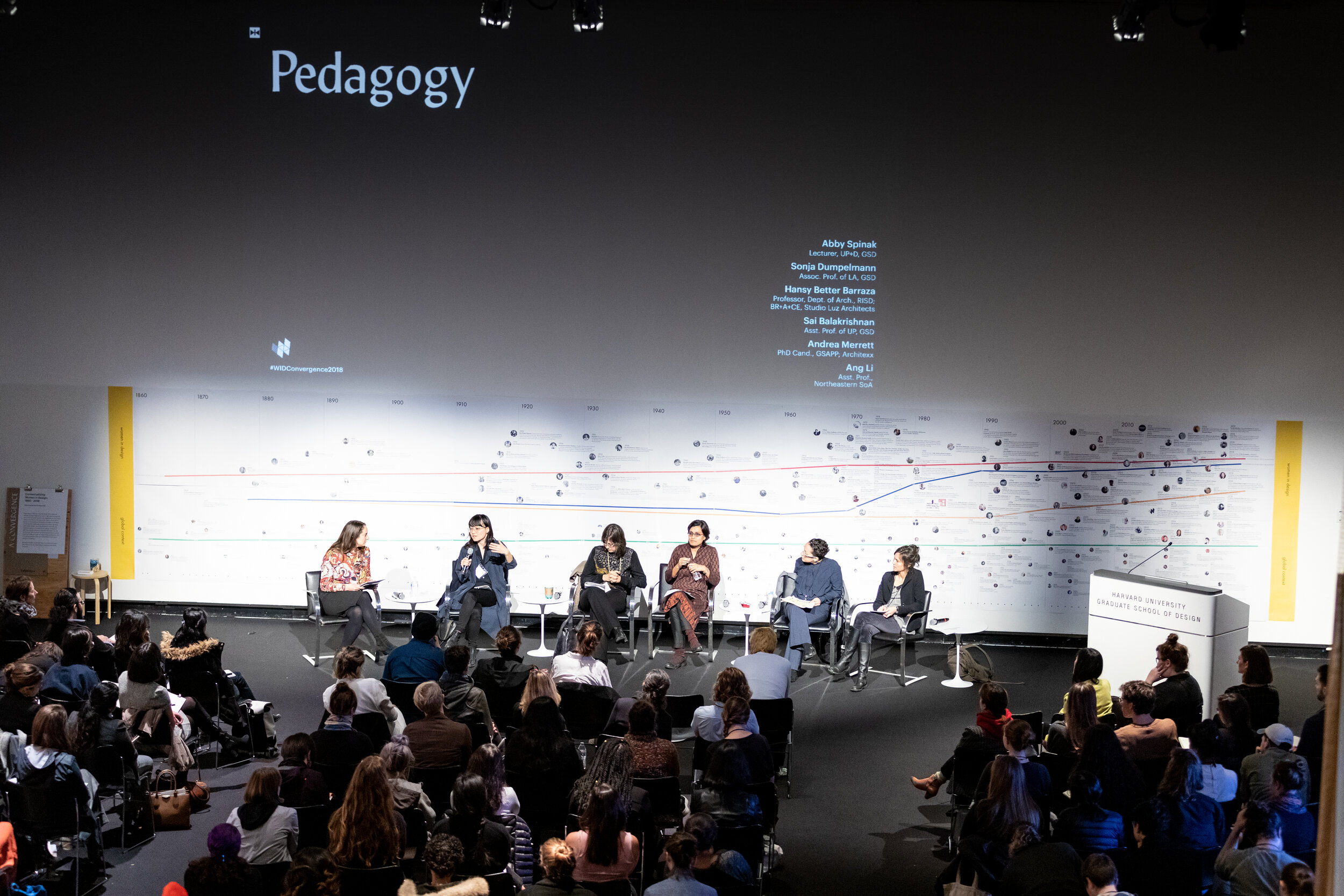

The Womb Chair Speaks (in process)
Collaborators: Kirin Makker; Project interns: Abbey Frederick, Ainsley Rhodes; Sponsor/curator: Alexandra DiStefano (MLA I 21)
Reproduced for Women in Design for Convergence
This artwork-in-progress brings together several interrogations of constraints surrounding the human womb’s overly simplistic cultural and social identity. The project argues that this limited understanding is harmful to humanity, perpetuating ignorance and social pathologies harmful to society. By refashioning the iconic architect-designed mid-century modern Womb Chair into a space and object that represents a womb’s textured and aggregative life, one that is marked, diseased and often traumatized by its own biological processes, this artwork offers viewers and participants a representation of the womb unconstrained by social pathologies and cultural mores. In this form, the womb reveals truths and magnifies invisible narratives; in essence, the womb speaks.
